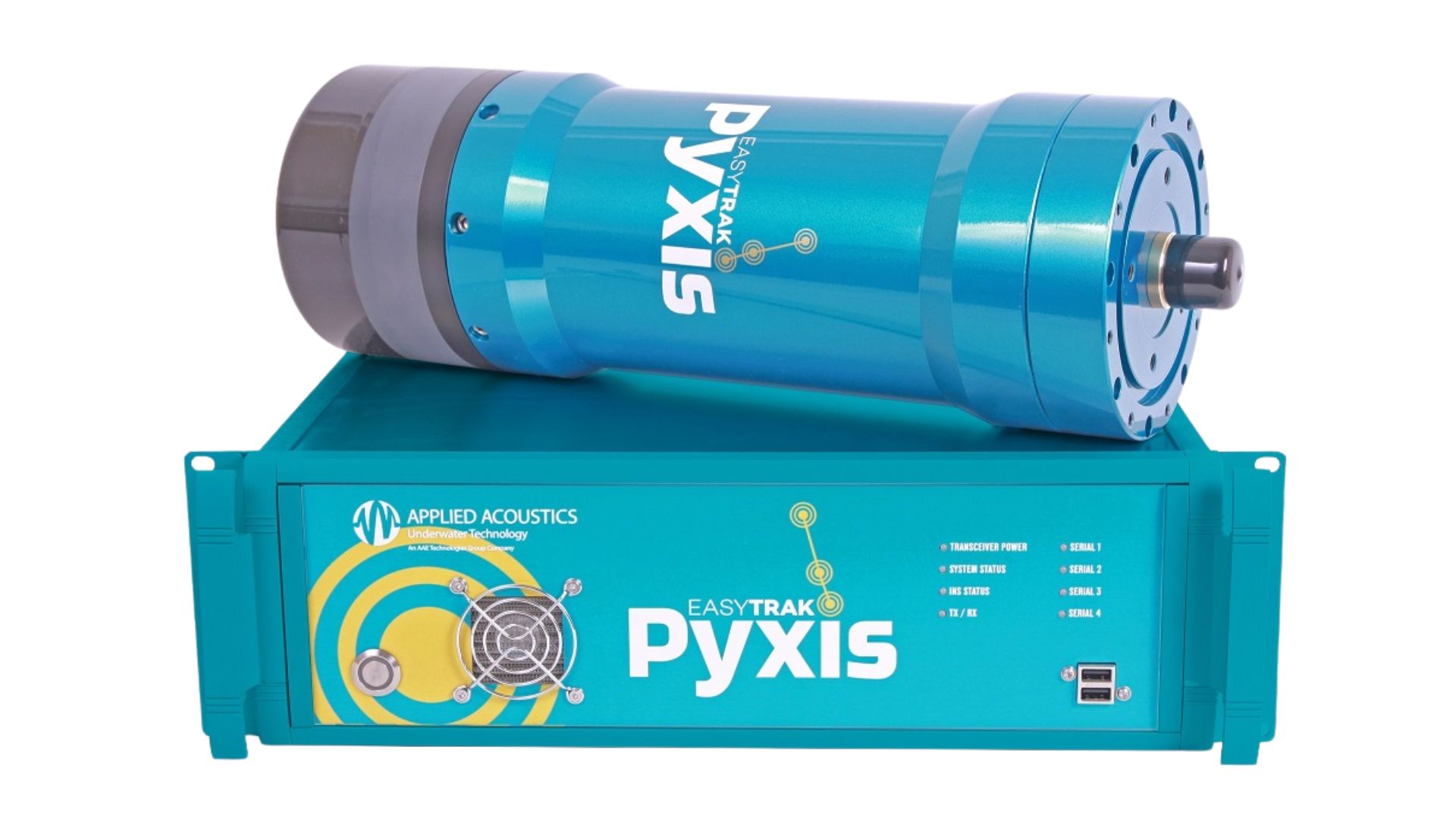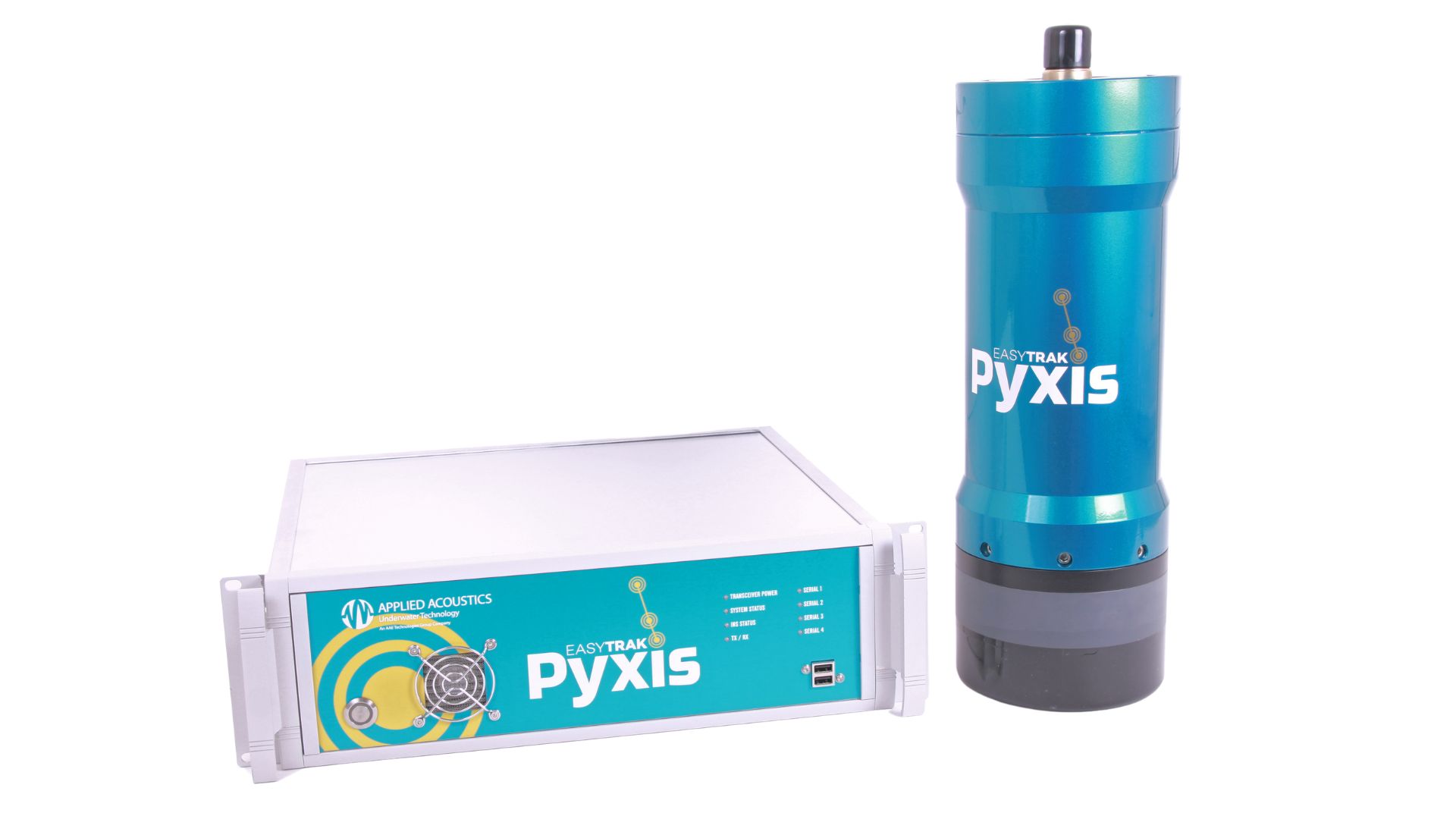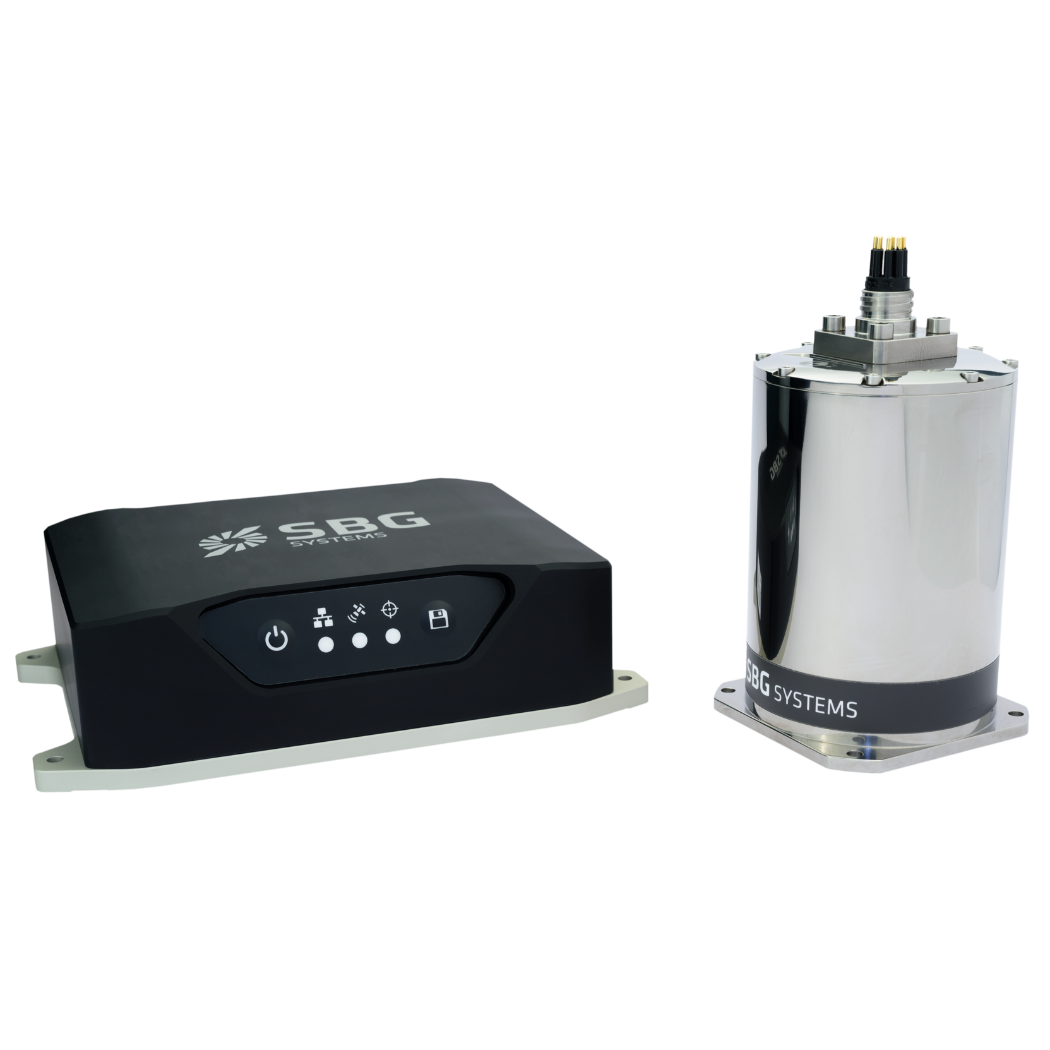Applied Acoustics launches its new integrated INS USBL system
Easytrak Pyxis, the new ready-to-use USBL with integrated Navsight Apogee INS.
“From the beginning, SBG Systems felt like a good fit. On top of fitting to the requirements, we have such a good relationship with SBG, especially regarding the integration and overall help from the technical support team.” | Applied Acoustics
Applied Acoustics: Acoustic Technology Expert of 30 years
Applied Acoustics is an English company specialized in highly technical acoustic products. They have products such as underwater positioning, tracking, and seabed profiling equipment for underwater studies.
For over 30 years the company has been at the forefront of both design and engineering excellence. They manufacture submarine equipment for all professional subsea applications. This includes offshore energy companies, academic institutions, and defense.
New Fully Integrated Easytrak Pyxis Inertial USBL System
A USBL, meaning Ultra Short Baseline, is an underwater positioning system composed of a transceiver that transmits acoustic signals to subsea beacons called transponders.
With this technique, information such as range, bearing, and depth are collected to determine a position.
Historically, Applied Acoustics’ USBL’s were interfaced with different external INS that could differ from one installation to another.
This demanded a full calibration of the system in the field, which was pretty time-consuming. Because alignment is never totally perfect, this procedure could also affect accuracy.
The company’s new USBL called Easytrak Pyxis was designed to bring more accuracy to professionals, by combining their USBL technology with an embedded Inertial Navigation System (INS).
The benefits of this oncoming solution are major gain in performance but also in time and cost.
This built-in system is factory-calibrated, sparing customers time to calibrate it and improving overall accuracy. The USBL’s transducer is now very easy to handle. Easytrak Pyxis is portable and can be mounted on all kinds of platforms, such as boats, USV, or buoys.
Combining Cost-effectiveness and Accuracy with SBG Systems INS
USBL needs a high heading accuracy, as a poor heading can affect overall positioning quite severely.
“Motion performance, as well as roll, pitch, and heave, are all important parts of the USBL compensation, but heading is the key factor for overall performance”, states Gavin Willoughby, Business Development Manager at Applied Acoustics.
The company chose the OEM version of the Navsight Apogee Solution from SBG Systems. In the one hand, it is composed of a processing board with GNSS.
On the other hand, the Inertial Measurement Unit that is closely aligned with the transducer.
This highly advanced and cost-effective INS solution comes in a very compact form combined with high accuracy motion, navigation, and heave, with a 0.025° GNSS-based heading. It is also ITAR-free, with no export restrictions.
“From the beginning, SBG Systems felt like a good fit. On top of fitting to the requirements, we have such a good relationship with SBG, especially regarding the integration and overall help from the technical support team”, declares Gavin.
Applied Acoustics shares the same vision as SBG Systems, which is that technology should be easy to handle, cost-effective, and flexible.
Indeed, the Apogee Navsight OEM solution brings to the new Easytrak Pyxis a maintenance-free and cost-effective system with unlimited firmware updates and easy web interface.
About Navsight Apogee OEM
The OEM version of our Navsight Marine Apogee solution delivers the same level of performance and accuracy than the original Navsight Marine Apogee.
The only difference between these two products is that the OEM version comes in a smaller and lighter enclosure and fits portable applications such as the Pyxis perfectly.
Ideal for challenging shallow to deep water applications and hydrographic tasks, this highly versatile INS delivers amazing performance during GNSS outage.
The Apogee IMU that is connected to the Navsight rugged processing unit embedding the fusion intelligence can either come in a surface version (IP68 enclosure) or subsea version (waterproof 100m).
Navsight Apogee is also compatible with SBG Systems in-house post-processing software Qinertia.


Navsight Marine
Highly Versatile, Navsight Marine Apogee grade delivers the best performance under GNSS outages, making it ideal for challenging Shallow to Deepwater applications.
It consists of an Apogee grade Inertial Measurement Unit and connected to Navsight, a rugged processing unit embedding the fusion intelligence and the GNSS receiver (option).

Ask a quotation for Navsight Marine
Do you have questions?
Welcome to our FAQ section! Here, you’ll find answers to the most common questions about the applications we showcase. If you don’t find what you’re looking for, feel free to contact us directly!
What are wave measurement sensors?
Wave measurement sensors are essential tools for understanding ocean dynamics and improving safety and efficiency in marine operations. By providing accurate and timely data on wave conditions, they help inform decisions across various sectors, from shipping and navigation to environmental conservation.
Wave buoys are floating devices equipped with sensors to measure wave parameters such as height, period, and direction.
They typically use accelerometers or gyroscopes to detect wave motion and can transmit real-time data to shore-based facilities for analysis.
What is bathymetry?
Bathymetry is the study and measurement of the depth and shape of underwater terrain, primarily focused on mapping the seafloor and other submerged landscapes. It is the underwater equivalent of topography, providing detailed insights into the underwater features of oceans, seas, lakes, and rivers. Bathymetry plays a crucial role in various applications, including navigation, marine construction, resource exploration, and environmental studies.
Modern bathymetric techniques rely on sonar systems, such as single-beam and multibeam echo sounders, which use sound waves to measure water depth. These devices send sound pulses toward the seafloor and record the time it takes for the echoes to return, calculating depth based on the speed of sound in water. Multibeam echo sounders, in particular, allow for wide swaths of the seafloor to be mapped at once, providing highly detailed and accurate seafloor representations.
Bathymetric data is essential for creating nautical charts, which help guide vessels safely by identifying potential underwater hazards like submerged rocks, wrecks, and sandbanks. It also plays a vital role in scientific research, helping researchers understand underwater geological features, ocean currents, and marine ecosystems.
What is a buoy used for?
A buoy is a floating device primarily used in maritime and water-based environments for several key purposes. Buoys are often placed in specific locations to mark safe passages, channels, or hazardous areas in bodies of water. They guide ships and vessels, helping them avoid dangerous spots like rocks, shallow waters, or wrecks.
They are used as anchoring points for vessels. Mooring buoys allow boats to tie up without having to drop anchor, which can be especially useful in areas where anchoring is impractical or damaging to the environment.
Instrumented buoys are equipped with sensors to measure environmental conditions like temperature, wave height, wind speed, and atmospheric pressure. These buoys provide valuable data for weather forecasting, climate research, and oceanographic studies.
Some buoys act as platforms for collecting and transmitting real-time data from the water or seabed, often used in scientific research, environmental monitoring, and military applications.
In commercial fishing, buoys mark the location of traps or nets. They also help in aquaculture, marking the locations of underwater farms.
Buoys can also mark designated areas such as no-anchoring zones, no-fishing zones, or swimming areas, helping enforce regulations on the water.
In all cases, buoys are critical for ensuring safety, facilitating marine activities, and supporting scientific research.
What is buoyancy?
Buoyancy is the force exerted by a fluid (such as water or air) that opposes the weight of an object submerged in it. It allows objects to float or rise to the surface if their density is less than that of the fluid. Buoyancy occurs because of the difference in pressure exerted on the object’s submerged portions—greater pressure is applied at lower depths, creating an upward force.
The principle of buoyancy is described by Archimedes’ principle, which states that the upward buoyant force on an object is equal to the weight of the fluid displaced by the object. If the buoyant force is greater than the object’s weight, it will float; if it is less, the object will sink. Buoyancy is essential in many fields, from marine engineering (designing ships and submarines) to the functionality of floating devices like buoys.
